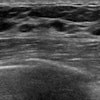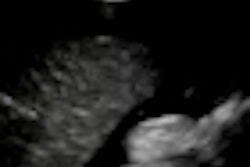With the help of echocardiography, researchers have found that patients with a congenital heart defect known as bicuspid aortic valve (BAV) have a relatively low rate of aortic dissection. However, they do have a significantly higher incidence of aortic aneurysms, according to a study published September 14 in the Journal of the American Medical Association.
Lead study author Dr. Hector Michelena from the Mayo Clinic in Rochester, MN, and colleagues analyzed long-term follow-up data of residents in Olmsted County who were diagnosed with BAV by echocardiography between 1980 and 1999. The researchers sought information on aortic complications of patients whose bicuspid valve issues were undiagnosed (JAMA, Vol. 306:10, pp. 1104-1112).
The study included 416 patients (288 men and 128 women), with a mean age at diagnosis of 35 years. The average follow-up of the patient sample was 16 years.
During the study period, aortic dissection occurred in two of the 416 patients, producing a 25-year risk of aortic dissection after echocardiogram diagnosis of 0.5%. While this rate is 8.4 times the risk of aortic dissection in the general U.S. population, the authors noted that the absolute risk remains low.
On the other hand, of the 384 patients without an aortic aneurysm at the beginning of the study, 49 (13%) developed aneurysms at follow-up. The 25-year risk of aneurysm formation among BAV patients was 26%. These patients had a risk of aneurysm formation 86 times greater than the general population.
After aneurysm diagnosis, the 15-year risks of aortic surgery and aortic dissection were 46% and 7%, respectively. The 25-year risk of aortic surgery after BAV diagnosis was 25%. Patients with BAV also had a 25-year risk of valve replacement of 53%.
In addition, the researchers found that the incidence of dissection was greater among patients older than 50 years of age and greater in patients with baseline aortic aneurysms.
Michelena and colleagues noted that their study provides new data on long-term BAV outcomes that are "both reassuring and a cause for careful monitoring of these patients." The study also emphasizes the need for early recognition of BAV to prevent heart failure due to late valvular surgery referrals.
The group recommended that future research focus on the biological pathways of BAV aorta disease and how it would respond to medical treatment, as well as identifying markers to better predict the risk of aortic dissection in these patients.



















